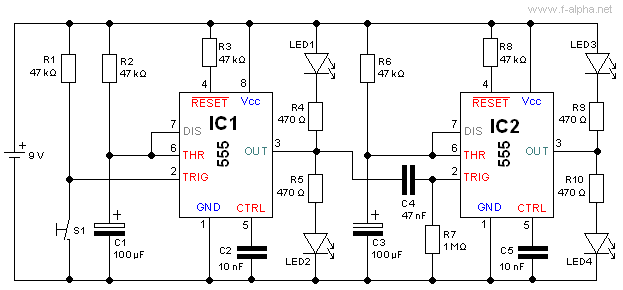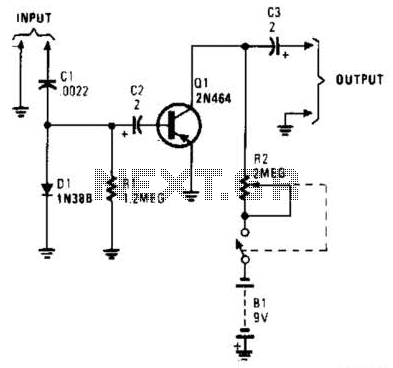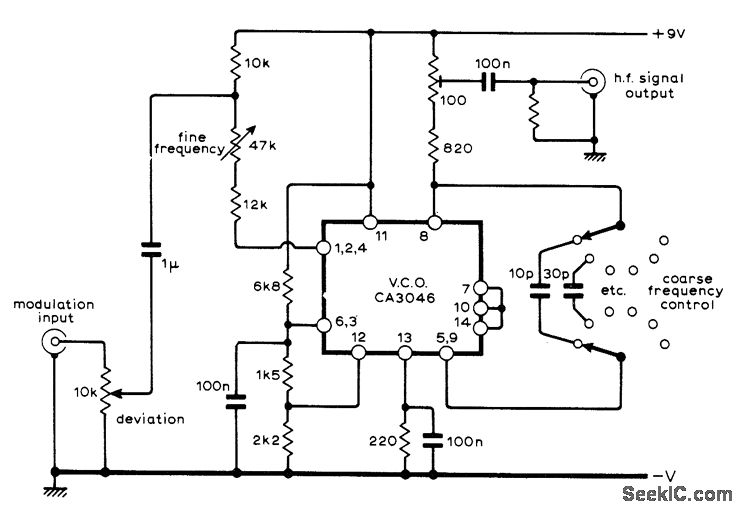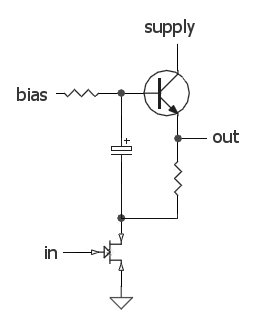
Averager and Peak Hold/Extender Signal Conditioner
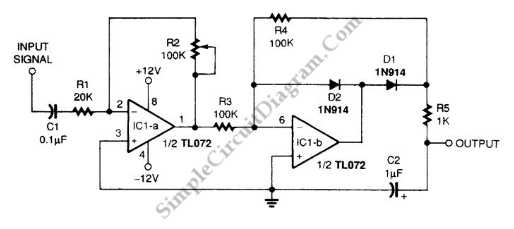
A signal averager circuit can be formed by an amplifier and active signal rectifier, which is implemented using two operational amplifiers in this circuit.
The signal averager circuit utilizes two operational amplifiers (op-amps) to achieve signal averaging through amplification and rectification. The first op-amp functions as a non-inverting amplifier, which boosts the input signal to a desired level while maintaining its phase. The output of this amplifier feeds into the second op-amp configured as an active rectifier. This active rectifier converts the amplified AC signal into a DC level, allowing for averaging over time.
The circuit typically includes feedback resistors that determine the gain of the amplifiers, along with diodes that ensure the rectification process only allows positive voltages to pass, effectively eliminating negative portions of the signal. Capacitors may also be incorporated to smooth out the output, providing a more stable average value.
In practical applications, this signal averager circuit can be used in various fields such as audio processing, sensor signal conditioning, and any scenario where it is necessary to obtain the average value of fluctuating signals. The careful selection of component values is critical to ensure the desired frequency response and accuracy of the averaging process.A signal averager circuit can be formed by an amplifier and active signal rectifier, which is implemented using two operational amplifiers in this circuit. The.. 🔗 External reference
The signal averager circuit utilizes two operational amplifiers (op-amps) to achieve signal averaging through amplification and rectification. The first op-amp functions as a non-inverting amplifier, which boosts the input signal to a desired level while maintaining its phase. The output of this amplifier feeds into the second op-amp configured as an active rectifier. This active rectifier converts the amplified AC signal into a DC level, allowing for averaging over time.
The circuit typically includes feedback resistors that determine the gain of the amplifiers, along with diodes that ensure the rectification process only allows positive voltages to pass, effectively eliminating negative portions of the signal. Capacitors may also be incorporated to smooth out the output, providing a more stable average value.
In practical applications, this signal averager circuit can be used in various fields such as audio processing, sensor signal conditioning, and any scenario where it is necessary to obtain the average value of fluctuating signals. The careful selection of component values is critical to ensure the desired frequency response and accuracy of the averaging process.A signal averager circuit can be formed by an amplifier and active signal rectifier, which is implemented using two operational amplifiers in this circuit. The.. 🔗 External reference
